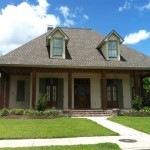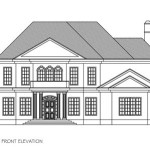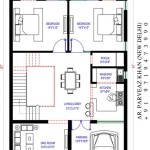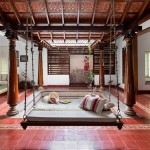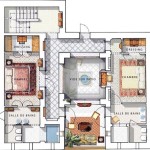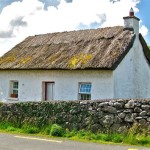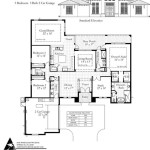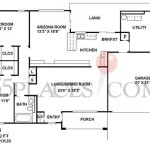Mountain House Plans With Loft: Maximizing Space and Embracing Rustic Charm
Mountain house plans with lofts represent a popular architectural choice for those seeking a blend of rustic aesthetics and efficient space utilization. These designs are particularly appealing in mountainous regions where land may be limited or where maximizing views is a priority. The inclusion of a loft offers several advantages, including additional living space, enhanced natural light, and a characteristic architectural element that often complements the surrounding landscape. Careful consideration of design elements, material selection, and structural integrity is crucial to ensuring the success of a mountain house plan with a loft.
The allure of a mountain house often stems from its connection to nature. Large windows, exposed beams, and natural materials like wood and stone are common features. Integrating a loft into this design framework requires a thoughtful approach that balances functionality with aesthetics. The loft space should feel like a natural extension of the main living area, rather than an afterthought. This often involves incorporating similar design elements and materials to create a cohesive and harmonious interior.
Understanding the Benefits of Loft Integration
The primary advantage of incorporating a loft into a mountain house plan lies in its ability to increase usable living space without significantly expanding the building's footprint. In regions where land is scarce or expensive, this vertical expansion can be a cost-effective solution. Lofts can serve a variety of purposes, including bedrooms, home offices, recreational areas, or even reading nooks. This versatility makes them particularly appealing to homeowners seeking flexible living arrangements.
Beyond space maximization, lofts can also contribute to enhanced natural light and improved ventilation. By incorporating windows or skylights into the loft space, designers can introduce additional light into the main living areas below. This can create a brighter and more inviting atmosphere, while also potentially reducing the need for artificial lighting. Furthermore, a well-designed loft can facilitate natural airflow, improving ventilation and overall comfort within the house.
From an architectural standpoint, lofts add a unique character to the building's design. The exposed beams and elevated vantage points often associated with lofts contribute to a sense of spaciousness and visual interest. In mountain house designs, this architectural element can further enhance the rustic charm and connection to the surrounding environment. The loft can become a focal point, showcasing the craftsmanship and design ingenuity of the house.
Key Design Considerations for Mountain House Lofts
Designing a successful mountain house plan with a loft requires careful attention to several key factors. These include structural integrity, accessibility, building codes, insulation, and of course, aesthetics. Addressing each of these aspects thoroughly is essential to ensuring a functional, safe, and visually appealing living space.
Structural Integrity: The structural foundation of the house must be capable of supporting the added weight and load of the loft. This requires a thorough assessment of the existing structure or, in the case of new construction, careful planning during the design phase. Engineers and architects must collaborate to ensure that the load-bearing walls, beams, and foundation are adequately sized and reinforced to handle the additional weight. This is particularly crucial in regions prone to seismic activity or heavy snowfall, where structural integrity is paramount.
Accessibility: Access to the loft space is a critical design consideration. Options include traditional staircases, spiral staircases, and ladders. The choice of access method will depend on the available space, the intended use of the loft, and the homeowner's preferences. Staircases offer the most comfortable and convenient access, especially for older individuals or those with mobility issues. However, they also require more space than spiral staircases or ladders. Spiral staircases can be a space-saving solution, but they may not be suitable for carrying large items or for individuals with limited mobility. Ladders are the most space-efficient option, but they are generally only appropriate for lofts that are used infrequently or for storage purposes.
Building Codes: All construction, including the addition of a loft, must comply with local building codes and regulations. These codes typically address issues such as minimum ceiling heights, fire safety, and egress requirements. Failure to comply with building codes can result in costly penalties and delays in the construction process. It is essential to consult with local building officials and obtain the necessary permits before commencing any construction work.
Insulation: Proper insulation is crucial for maintaining comfortable indoor temperatures in a mountain house, particularly in regions with harsh climates. The loft space should be adequately insulated to prevent heat loss in the winter and heat gain in the summer. This will help to reduce energy consumption and lower heating and cooling costs. Insulation materials should be carefully selected to ensure they are compatible with the building's design and environmental conditions.
Aesthetics: The overall aesthetic of the loft should complement the design of the house. This includes the selection of materials, finishes, and decorative elements. In mountain house designs, natural materials such as wood and stone are often used to create a rustic and inviting atmosphere. The loft space can be further enhanced by incorporating features such as exposed beams, natural light, and views of the surrounding landscape.
Material Selection for Mountain House Loft Designs
The choice of materials plays a significant role in the overall look and feel of a mountain house loft. Selecting durable, aesthetically pleasing, and environmentally conscious materials is essential for creating a space that is both functional and visually appealing. Common material choices include wood, stone, metal, and glass. Each of these materials offers unique properties and characteristics that can contribute to the overall design.
Wood: Wood is a traditional and versatile material that is often used in mountain house designs. It can be used for structural framing, flooring, walls, ceilings, and decorative elements. Different types of wood offer varying degrees of durability, strength, and aesthetic appeal. Pine, cedar, and fir are common choices for framing and structural elements, while hardwoods such as oak and maple are often used for flooring and cabinetry. The natural warmth and texture of wood create a cozy and inviting atmosphere, making it a popular choice for mountain house lofts. The type of wood siding selected can also greatly impact the aesthetic and maintenance requirements. Choosing a highly durable and weather resistant option such as cedar is preferable in unforgiving climates.
Stone: Stone is another natural material that is often incorporated into mountain house designs. It can be used for foundations, walls, fireplaces, and landscaping. Stone offers excellent durability and thermal mass, helping to regulate indoor temperatures and reduce energy consumption. The natural variations in color and texture of stone add visual interest and character to the building's design. While real stone offers the most authentic look, manufactured stone veneers can be a more affordable and lightweight alternative. The use of stone in the loft itself might be limited by weight constraints, but it can be effectively used in supporting structures or to create a visual connection to the exterior.
Metal: Metal can be used for roofing, siding, railings, and decorative elements. Metal roofs are durable, fire-resistant, and low-maintenance, making them a popular choice for mountain houses. Metal siding can provide a sleek and modern look, while also offering excellent weather protection. Metal railings and decorative elements can add a touch of industrial chic to the design. Different types of metal offer varying degrees of durability and corrosion resistance. Stainless steel and aluminum are common choices for railings and decorative elements, while galvanized steel is often used for roofing and siding. The reflectivity of metal can also be used strategically to enhance natural light within the loft space.
Glass: Glass is an essential material for incorporating natural light and views into a mountain house loft. Large windows and skylights can flood the space with sunlight, creating a bright and airy atmosphere. Energy-efficient glass options can help to minimize heat loss in the winter and heat gain in the summer. The strategic placement of windows and skylights can maximize views of the surrounding landscape, creating a strong connection to nature. The use of glass can also create a sense of spaciousness, making the loft feel larger and more open.
Choosing the right materials is fundamental to the success of the design. Careful material selection will ensure a beautiful and long-lasting mountain house with a functional loft space.

Small Mountain House Plans Houseplans Blog Com
:max_bytes(150000):strip_icc()/bitterroot-b0a6d7cc5d7c464d97a5670a4d2d3a57.jpg?strip=all)
25 Best Mountain House Plans For Your Vacation Home

Home Plan 001 2242 Great House Design Lake Plans Mountain Craftsman

Home Plan 001 2080 Great House Design Plans Mountain

Mountain House Plans The Plan

Mountain House Plans By Max Fulbright Designs

Mountain Home Floor Plans We Love Blog Eplans Com

Plan 35510gh Mountain House With Expansion Possibilities Plans Lake Sloping Lot

Mountain House Plans The Plan

Small Mountain House Plans Houseplans Blog Com

